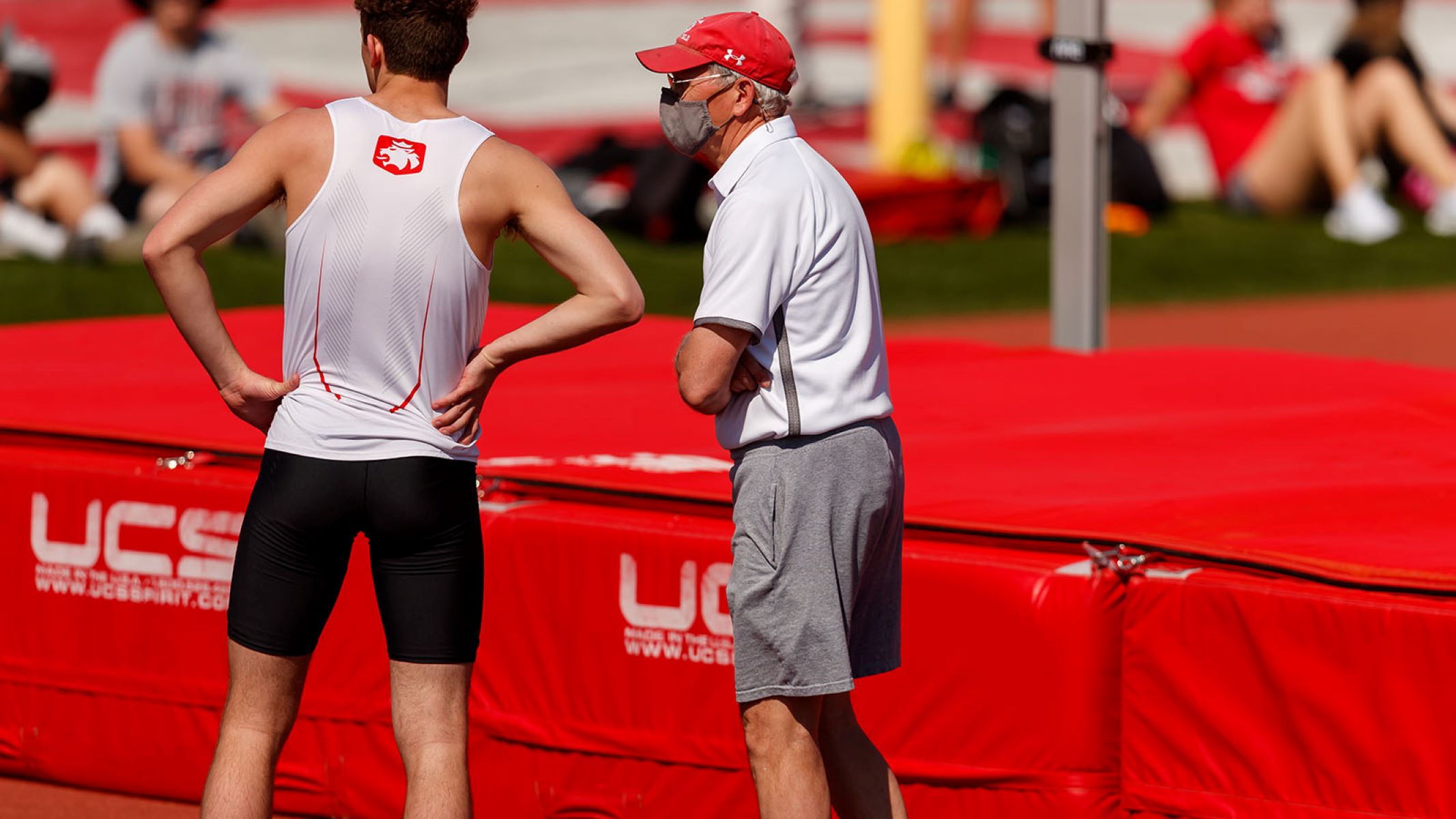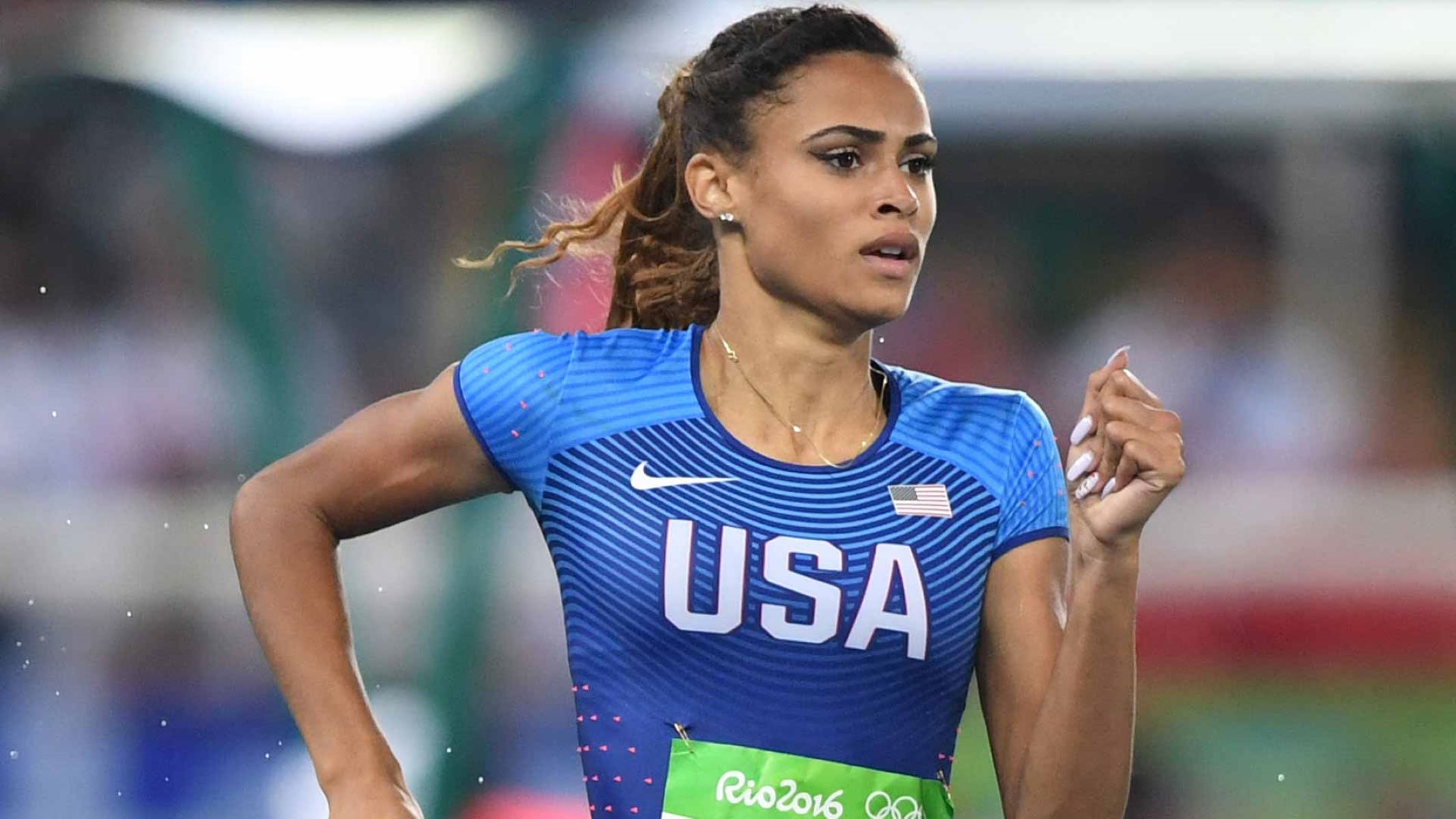

Featured
How To Be A Running Coach
Modified: March 1, 2024
Learn how to become a featured running coach and share your expertise with aspiring athletes. Discover the steps to start coaching and make a difference in the running community.
Introduction
Welcome to the world of running coaching! If you have a passion for running and a desire to help others achieve their fitness goals, becoming a running coach can be a rewarding career choice. As a running coach, you will have the opportunity to guide individuals of all ages and fitness levels on their journey to becoming stronger, faster, and more confident runners.
Running is a popular form of exercise that offers numerous physical and mental benefits. From improving cardiovascular health and strengthening muscles to reducing stress and enhancing mood, running has a transformative impact on individuals’ lives. However, not everyone knows how to run effectively or how to train properly to reach their full potential.
That’s where a running coach comes in. As a running coach, you will provide valuable guidance and support to your clients, helping them develop the skills, knowledge, and confidence they need to become successful runners. Whether your clients are beginners looking to complete their first 5k or experienced athletes aiming to improve their race times, your expertise and guidance will be instrumental in their journey.
In this article, we will explore the qualifications required to become a running coach, the skills and knowledge you need to develop, and the key responsibilities you will have. From understanding running techniques and training principles to designing effective training plans and preventing injuries, we will cover all aspects of being a successful running coach.
So, if you’re ready to embark on this fulfilling and exciting career path, let’s dive into the world of running coaching and explore the essential qualities and skills you need to possess.
Qualifications to Become a Running Coach
Becoming a running coach requires a combination of education, experience, and a genuine passion for running. While there is no strict set of qualifications to enter this field, certain credentials and experiences can greatly enhance your credibility as a running coach. Here are some qualifications worth considering:
- Running Experience: As a running coach, it’s important to have a solid background in running. This includes having personal experience as a runner and participating in races or events. Your own running journey will provide valuable insights and empathy when working with clients.
- Education and Certifications: While not mandatory, completing courses or certifications in running coaching can be advantageous. Look for programs that cover topics such as exercise physiology, biomechanics, and coaching methods. Organizations like the Road Runners Club of America (RRCA) and USA Track & Field (USATF) offer certification programs that can boost your credentials.
- First Aid and CPR Certification: As a running coach, you will be responsible for the well-being of your clients. Obtaining first aid and CPR certification ensures that you are equipped to handle any emergencies that may arise during training sessions.
- Coaching Experience: While not a prerequisite, having prior experience in coaching or working with individuals in a fitness setting can be valuable. It demonstrates your ability to effectively communicate, motivate, and tailor training programs to meet individual needs.
- Continuing Education: The field of running and fitness is always evolving. Stay up-to-date with the latest research, training techniques, injury prevention strategies, and nutrition guidelines by attending seminars, workshops, and webinars. Continuing education shows your commitment to growth and providing the best possible guidance to your clients.
Remember, qualifications alone do not make a great running coach. Your passion, dedication, and ability to connect with your clients are equally important. Assess your own strengths and areas for improvement, and strive to continually grow as a running coach.
Now that we’ve discussed the qualifications necessary to become a running coach, let’s explore the knowledge and skills you need to develop in order to excel in this role.
Developing Knowledge in Running Techniques
As a running coach, it is essential to have a strong understanding of running techniques in order to effectively guide your clients. Developing knowledge in running techniques will allow you to analyze and assess your clients’ form and provide them with valuable feedback for improvement. Here are some key aspects to focus on:
- Running Form: Understanding proper running form is crucial. This includes maintaining a relaxed posture, engaging core muscles, and running with a forward lean. You should also be familiar with foot strike patterns (heel, midfoot, or forefoot) and how they can impact efficiency and injury risk.
- Stride Length and Cadence: Stride length and cadence are important factors that affect running efficiency and speed. Stride length is the distance covered with each step, while cadence refers to the number of steps taken per minute. Finding the optimal balance between stride length and cadence can help reduce the risk of overstriding and lower the chance of injuries.
- Hill Running: Running uphill and downhill presents unique challenges. Understanding proper technique and strategies for hill running can help your clients improve their strength and efficiency on varied terrains.
- Breathing Techniques: Breathing plays a vital role in running. Teaching your clients proper breathing techniques, such as deep belly breathing and rhythmic patterns, can help them maintain optimal oxygen intake and prevent side stitches or other breathing-related issues.
- Running Surfaces: Different surfaces, such as roads, trails, or treadmills, require slight adjustments in running technique. Familiarize yourself with the specific considerations for each surface to provide tailored guidance to your clients based on their running environment.
In addition to developing knowledge in these techniques, it is essential to stay up-to-date with the latest research and advancements in the field of running. Attend seminars, read books and articles, and engage with other running professionals to expand your knowledge and refine your coaching methods.
By continually developing your knowledge in running techniques, you will be able to provide your clients with expert guidance and help them optimize their running form, prevent injuries, and improve their overall performance.
Next, we will dive into another important aspect of being a running coach – understanding the principles of training.
Understanding the Principles of Training
As a running coach, understanding the principles of training is fundamental to designing effective and personalized training plans for your clients. By applying these principles, you can help your clients improve their performance, increase their endurance, and prevent overtraining or injuries. Here are the key principles to keep in mind:
- Specificity: The principle of specificity states that training should be specific to the demands of the sport or activity. In the case of running, this means tailoring the training program to match the goals, distance, and terrain of the race or event your client is preparing for.
- Progression: Progression involves gradually increasing the intensity, duration, or volume of training over time. This principle allows the body to adapt and improve without pushing it too hard too quickly, reducing the risk of overuse injuries and burnout.
- Individualization: Every runner is unique, and individualization is about customizing the training program to fit the specific needs and abilities of each client. Factors to consider include their current fitness level, previous running experience, time availability, and any limitations or injuries they may have.
- Recovery and Rest: Adequate rest and recovery are essential for optimizing performance and preventing injuries. As a running coach, you must educate your clients on the importance of rest days, sleep, and proper nutrition to facilitate muscle repair and growth.
- Overload: The principle of overload dictates that in order for the body to improve, training must be challenging and push the limits of physical capacity. Gradually increasing the demands placed on the body through structured workouts helps stimulate adaptation and progress.
- Variation: Introducing variety into training routines helps prevent boredom, reduces the risk of overuse injuries, and promotes overall fitness. Incorporating different types of workouts, such as interval training, tempo runs, and cross-training, challenges different energy systems and enhances overall performance.
By understanding and applying these principles of training, you will be able to design personalized and effective training plans that consider your clients’ individual needs, goals, and limitations. Monitoring progress and making adjustments to the training program as necessary will also be crucial to ensure continuous improvement.
Now that we have explored the principles of training, let’s move on to the next section, which focuses on assessing individual needs and goals as a running coach.
Assessing Individual Needs and Goals
As a running coach, one of your key responsibilities is to assess the individual needs and goals of your clients. By gaining a thorough understanding of their fitness levels, running experience, strengths, weaknesses, and aspirations, you can create customized training plans that address their specific requirements. Here are some steps to effectively assess your clients:
- Initial Consultation: Begin by conducting an initial consultation with your clients. This can be done through a face-to-face meeting, phone call, or online questionnaire. Ask questions to gather information about their running background, previous injuries, training history, and current fitness level. This will help you establish a baseline and identify any potential limitations or areas for improvement.
- Physical Assessments: Perform physical assessments to evaluate your clients’ range of motion, flexibility, and muscular imbalances that may affect their running form or predispose them to injuries. Use tools such as gait analysis to analyze their running technique and identify any areas that need attention or improvement.
- Goal Setting: Engage in a thorough discussion with your clients to understand their running goals. These goals can range from completing a specific race distance, improving race times, achieving a personal best, or simply enjoying the process of running. Setting clear and realistic goals allows you to tailor the training plan to align with their aspirations and motivation.
- Communication: Regularly communicate with your clients to get feedback on their training, address any concerns, and track their progress. This will help you understand their experiences, gauge their response to the training program, and make necessary adjustments along the way.
- Continual Evaluation: Assess your clients’ progress and performance regularly. This can include timed runs, strength assessments, or periodic check-ins to see how they are feeling physically and mentally. Monitoring their progress allows you to make data-driven decisions and adapt the training program to keep them on track towards their goals.
By thoroughly assessing your clients’ needs and goals, you can provide them with personalized training plans that address their specific requirements. This individualized approach not only enhances their chances of success but also helps build a strong coach-client relationship based on trust and collaboration.
Next, we will explore the important responsibility of designing effective training plans as a running coach.
Designing Effective Training Plans
As a running coach, one of your primary responsibilities is to design effective training plans that help your clients reach their running goals. A well-designed training plan takes into account various factors such as individual needs, fitness levels, time availability, and race-specific requirements. Here are key considerations when designing training plans:
- Goal-Orientation: Your clients’ goals and aspirations should be at the forefront of the training plan. Whether they aim to complete a race, improve their race time, or build endurance, the training plan should be tailored to support their specific objectives.
- Gradual Progression: The training plan should include a gradual increase in intensity, duration, and distance over time. This helps prevent overuse injuries and allows the body to adapt and improve progressively.
- Periodization: Incorporate periodization into the training plan, dividing it into distinct phases such as base building, strength and endurance development, and peak performance. Each phase will have specific training focuses to optimize performance and prevent burnout.
- Training Structure: Establish a balanced training structure that includes a mix of different types of runs and workouts, such as long runs, speed intervals, tempo runs, recovery runs, and cross-training. This variety helps in building different energy systems, improving overall endurance, and preventing training plateaus.
- Rest and Recovery: Ensure that rest days and recovery periods are included in the training plan. Adequate rest promotes muscle repair, reduces the risk of overtraining, and enhances overall performance. Encourage your clients to prioritize sleep, nutrition, and self-care during these periods.
- Flexibility: Emphasize the importance of flexibility within the training plan. Life happens, and sometimes adjustments need to be made. A flexible plan allows for modifications due to unexpected circumstances, injuries, or changes in goals.
It is also important to regularly communicate with your clients to understand their progress, challenges, and any feedback they may have on the training plan. This ongoing dialogue will help you make necessary adjustments and modifications to optimize their training experience.
Remember, every individual is different, and what works for one person may not work for another. Continually assess and evaluate the effectiveness of the training plan in relation to your clients’ goals and make necessary adjustments to keep them on track and motivated.
Now that we have explored the key considerations for designing effective training plans, let’s move on to the importance of incorporating strength and flexibility exercises as a running coach.
Incorporating Strength and Flexibility Exercises
As a running coach, you understand that running is not just about logging miles. Incorporating strength and flexibility exercises into your clients’ training plans is crucial for their overall performance, injury prevention, and maintaining balanced musculature. Here are the key reasons why strength and flexibility training should be a part of your coaching:
- Injury Prevention: Strength training helps strengthen muscles, tendons, and ligaments, reducing the risk of common running injuries. By targeting major muscle groups involved in running, such as the core, glutes, hips, and legs, you can improve overall stability and reduce imbalances.
- Improved Running Efficiency: Strengthening the muscles used in running enhances running economy and performance. Stronger muscles help generate more power, maintain proper form, and prevent fatigue, resulting in improved running efficiency.
- Better Muscle Balance: Running is a repetitive movement that can lead to muscle imbalances. By incorporating strength exercises that target both the primary and stabilizer muscles, you can achieve better muscle balance and reduce the risk of overuse injuries.
- Enhanced Stability and Core Strength: A strong core and stable body are essential for proper running mechanics. Core exercises help improve stability, posture, and balance, which directly translate into better running form and efficiency.
- Increased Flexibility: Flexibility exercises, such as dynamic warm-ups and static stretches, can improve joint mobility, range of motion, and muscle flexibility. This helps enhance running stride length, reduce muscle tension, and prevent injuries.
- Rehabilitation and Recovery: Strength and flexibility exercises play a vital role in rehabilitation and recovery from running-related injuries. By addressing muscle imbalances, improving flexibility, and strengthening the injured area, you can aid the healing process and enhance recovery.
When incorporating strength and flexibility exercises into the training plan, ensure they are targeted to the specific needs of your clients. Focus on exercises that address common areas of weakness or imbalances seen in runners, such as hip stability exercises, core strengthening exercises, and exercises that target the glutes, hamstrings, and calves.
Furthermore, educate your clients on the importance of proper form and technique when performing strength exercises to optimize results and minimize the risk of injury. Consider providing demonstrations, written instructions, or video resources to guide them in their training.
Remember, strength and flexibility exercises should complement running training, not replace it. Strive for a balanced approach that allows your clients to build strength, improve flexibility, and maintain their running performance effectively.
Next, we will delve into the crucial aspect of monitoring and tracking the progress of your clients as a running coach.
Monitoring and Tracking Progress
Monitoring and tracking the progress of your clients is a vital responsibility of a running coach. By regularly assessing their performance and making adjustments as needed, you can ensure that they are on the right path to achieving their running goals. Here are key steps to effectively monitor and track progress:
- Goal Review: Regularly review your clients’ goals to keep them focused and motivated. Assess whether their goals are still relevant and adjust them if necessary based on their progress and changing circumstances.
- Performance Metrics: Utilize various performance metrics to gauge your clients’ progress. These can include timed runs, race times, distance covered, heart rate variability, and perceived exertion levels. Tracking these metrics over time allows you to identify trends, track improvement, and adjust training plans accordingly.
- Periodic Assessments: Conduct periodic assessments to measure your clients’ fitness levels, running form, and muscular imbalances. These assessments can involve gait analysis, strength tests, flexibility tests, and body composition measurements. Use the results to determine areas of improvement and to make adjustments to their training plans.
- Communication and Feedback: Regularly communicate with your clients to gather feedback on their training experiences. Ask questions about how they are feeling physically and mentally, any challenges they may be facing, and factors that positively or negatively impact their performance. This open dialogue enables you to make informed decisions and modifications to the training plan.
- Data Analysis: Analyze the data collected from performance metrics, assessments, and client feedback. Look for patterns, trends, and areas of improvement. Use this information to inform training plan adjustments, including changes in workout intensity, duration, or focus areas.
- Recovery and Adaptation: Monitor your clients’ recovery and adaptation to the training program. Assess their energy levels, sleep quality, and any signs of overtraining or burnout. Adjust training load, rest days, and recovery periods as necessary to prevent injuries and optimize performance.
Consistent monitoring and tracking will allow you to make data-driven decisions, adapt training plans, and keep your clients motivated and engaged. It also helps in building a coach-client relationship based on trust, communication, and collaboration.
Remember that progress is not solely measured by improvements in race times or distances. Celebrate small victories, such as increased consistency, better form, or improved mental resilience. Acknowledge the effort and commitment your clients put into their training journey and celebrate their progress along the way.
Next, let’s explore an important aspect of being a running coach – preventing and managing injuries.
Preventing and Managing Injuries
As a running coach, one of your primary responsibilities is to help your clients prevent and manage injuries. Running is a physically demanding activity that can put stress on the body, so it’s important to take proactive measures to reduce the risk of injuries. Here are key strategies to prevent and manage injuries:
- Proper Warm-up and Cool-down: Educate your clients on the importance of warming up before running and cooling down after. Include dynamic warm-up exercises to gradually increase heart rate, improve blood circulation, and activate muscles. Cool-down activities such as gentle stretching and foam rolling can help reduce muscle soreness and promote recovery.
- Appropriate Footwear: Guide your clients in selecting running shoes that provide proper support, cushioning, and fit. Encourage them to visit a specialty running store for expert shoe fittings to ensure they have the right footwear for their foot type and running style. Regularly check the condition of their shoes to determine when replacements are needed.
- Strength and Cross-Training: Incorporate strength training exercises that target the muscles used in running, including the core, hips, glutes, and legs. Strengthening these areas helps improve stability, reduces the risk of imbalances, and supports proper running mechanics. Encourage cross-training activities such as swimming, cycling, or yoga to add variety and reduce the repetitive stress of running.
- Gradual Progression: Gradually increase training load, distance, and intensity to allow the body to adapt and prevent overuse injuries. Avoid sudden spikes in training volume or significant changes in running surfaces or terrains, as these can put excessive strain on the body.
- Listen to the Body: Educate your clients about the importance of listening to their bodies and recognizing early warning signs of potential injuries. Encourage them to take rest days when needed, and address any discomfort or pain promptly.
- Proper Nutrition and Hydration: Guide your clients on maintaining a balanced diet to support their training and running goals. Adequate hydration and proper nutrition are crucial for optimal performance and recovery. Encourage them to consume a variety of nutrients, including carbohydrates, protein, and healthy fats.
- Injury Management: If an injury does occur, provide guidance on appropriate self-care measures such as rest, ice, compression, and elevation (RICE). Encourage your clients to seek professional medical advice when needed and guide them through the rehabilitation process to safely return to running.
By prioritizing injury prevention and managing injuries effectively, you can help your clients stay healthy, minimize setbacks, and maintain their consistency in training.
Next, let’s explore the role of a running coach in providing motivation and support to clients.
Providing Motivation and Support
As a running coach, your role extends beyond providing training plans and technical guidance. It’s equally important to provide motivation and support to keep your clients engaged, focused, and motivated throughout their running journey. Here are key ways to provide motivation and support:
- Set Realistic and Achievable Goals: Help your clients set realistic and achievable goals that align with their abilities and aspirations. Break down larger goals into smaller milestones to provide a sense of progress and accomplishment along the way.
- Celebrate Achievements: Celebrate your clients’ accomplishments and milestones, whether it’s a new personal best time, completing a challenging race distance, or overcoming a mental or physical hurdle. Acknowledge their efforts and reinforce their motivation to keep pushing forward.
- Positive Reinforcement: Provide regular positive reinforcement and encouragement to your clients. Recognize their dedication, hard work, and improvements. Use motivating and uplifting language to keep them motivated and confident in their abilities.
- Individualized Support: Take the time to understand the unique needs, challenges, and aspirations of each client. Provide personalized attention, addressing their specific questions and concerns. This individualized approach shows that you genuinely care about their progress and well-being.
- Effective Communication: Maintain open and effective communication with your clients. Regularly check in with them to see how they are feeling physically and mentally. Provide a safe space for them to share their experiences, struggles, and victories. Respond promptly to their inquiries or concerns.
- Create a Supportive Community: Foster a sense of community and establish connections among your clients. Encourage them to support and motivate each other through group activities, online forums, or social media groups. This shared experience can provide a valuable support system and positive peer influence.
- Provide Variety and Fun: Keep the training process engaging and enjoyable by incorporating variety in workouts, routes, or challenges. Introduce new training techniques, organize group runs or events, or recommend local races or virtual challenges to add excitement and keep motivation high.
- Be a Role Model: Lead by example and be a role model for your clients. Demonstrate your passion for running and a healthy lifestyle. Share your own running experiences, triumphs, and challenges to inspire and motivate them.
Remember that each client is unique and may require different forms of motivation and support. Listen to their needs, adapt your coaching style as necessary, and provide guidance that resonates with them personally.
By providing motivation and support, you can help your clients stay committed, overcome obstacles, and achieve their running goals while fostering a positive and empowering coaching relationship.
Now that we’ve explored the role of a running coach in providing motivation and support, let’s conclude our comprehensive guide to being a running coach.
Conclusion
Being a running coach is a rewarding and fulfilling career where you have the opportunity to make a significant impact on the lives of your clients. By guiding and supporting them on their running journey, you can help them achieve their goals, improve their performance, and maintain a healthy and balanced lifestyle.
In this comprehensive guide, we have explored the qualifications required to become a running coach, including running experience, education, and certifications. We discussed the importance of developing knowledge in running techniques, understanding the principles of training, and assessing individual needs and goals to create personalized training plans.
We also emphasized the significance of incorporating strength and flexibility exercises, monitoring and tracking progress, and preventing and managing injuries. Additionally, we discussed the vital role of providing motivation and support to keep your clients engaged and motivated throughout their running journey.
As a running coach, it is essential to constantly strive for growth and learning. Stay up-to-date with the latest research, attend workshops and seminars, and continuously evolve your coaching techniques to provide the best guidance possible.
Remember, being a running coach is not just about the technical aspects of running. It’s about building relationships, understanding your clients’ aspirations, and providing them with the support, motivation, and accountability they need to succeed.
So, if you have a passion for running and a genuine desire to help others, embrace the role of a running coach and embark on an incredible journey of guiding and inspiring runners to reach their full potential.









